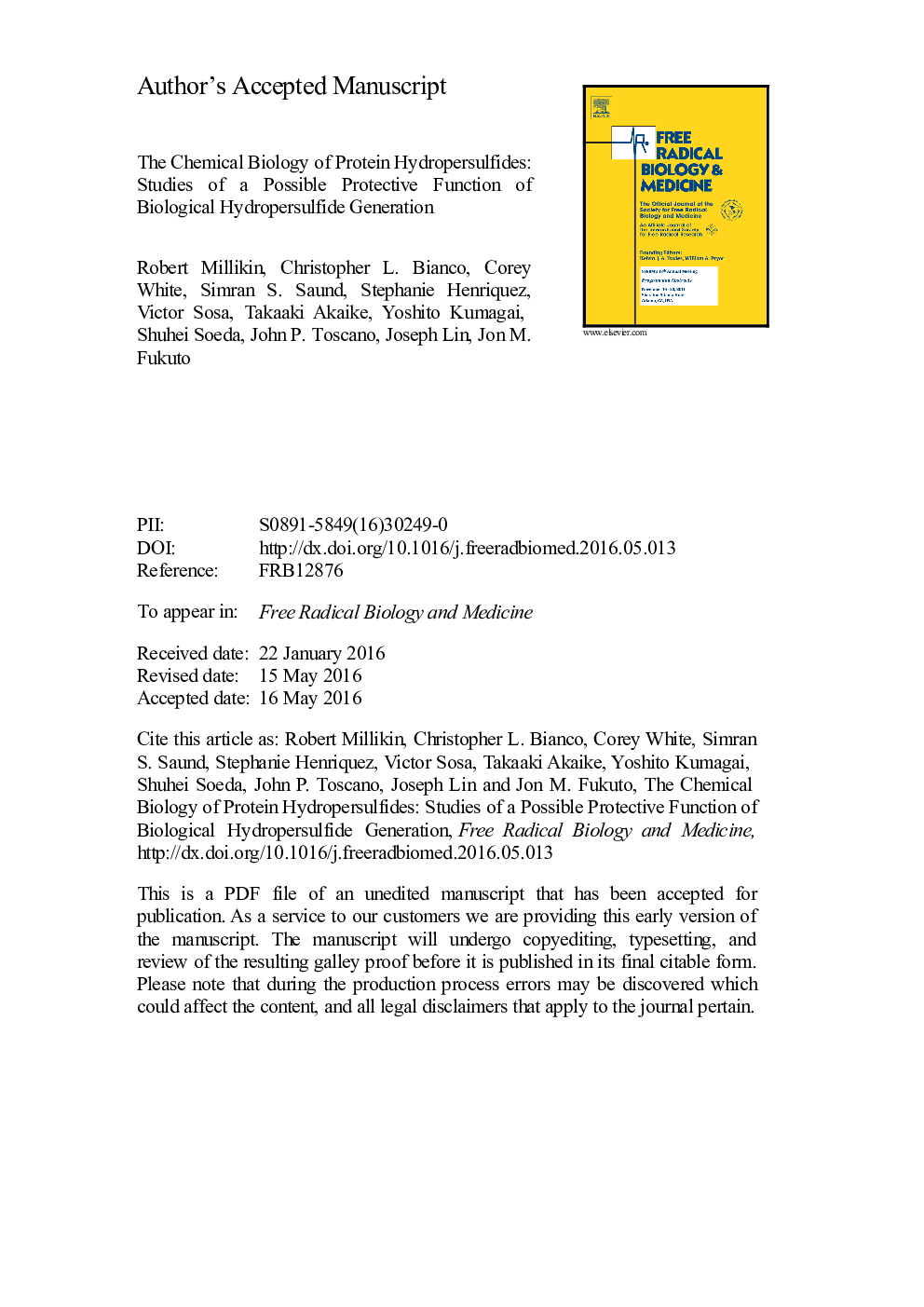| Article ID | Journal | Published Year | Pages | File Type |
|---|---|---|---|---|
| 8267550 | Free Radical Biology and Medicine | 2016 | 42 Pages |
Abstract
The recent discovery of significant hydropersulfide (RSSH) levels in mammalian tissues, fluids and cells has led to numerous questions regarding their possible physiological function. Cysteine hydropersulfides have been found in free cysteine, small molecule peptides as well as in proteins. Based on their chemical properties and likely cellular conditions associated with their biosynthesis, it has been proposed that they can serve a protective function. That is, hydropersulfide formation on critical thiols may protect them from irreversible oxidative or electrophilic inactivation. As a prelude to understanding the possible roles and functions of hydropersulfides in biological systems, this study utilizes primarily chemical experiments to delineate the possible mechanistic chemistry associated with cellular protection. Thus, the ability of hydropersulfides to protect against irreversible electrophilic and oxidative modification was examined. The results herein indicate that hydropersulfides are very reactive towards oxidants and electrophiles and are modified readily. However, reduction of these oxidized/modified species is facile generating the corresponding thiol, consistent with the idea that hydropersulfides can serve a protective function for thiol proteins.
Keywords
Related Topics
Life Sciences
Biochemistry, Genetics and Molecular Biology
Ageing
Authors
Robert Millikin, Christopher L. Bianco, Corey White, Simran S. Saund, Stephanie Henriquez, Victor Sosa, Takaaki Akaike, Yoshito Kumagai, Shuhei Soeda, John P. Toscano, Joseph Lin, Jon M. Fukuto,
